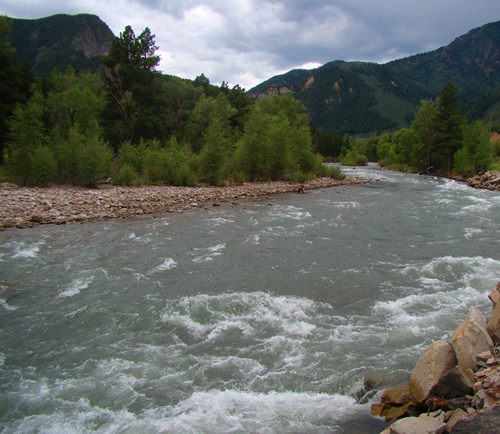Sunday, July 14 2019
Alluvial gold refers to tiny gold flakes that come to be through water erosion and movement. In geology, alluvium The alluvial environment is a very complex one, with many natural forces competing with each other. The forces that lay down gold are a summation of many flood water events of varying intensity that cause the reworking of sands and gravels. Between major flood events, water naturally flows along the already created path and typically the gold present in the gravel or on the surface will not move much. But the larger flooding events can change the drainage routes and even the river’s shape. Some curves can be shut off from the stream and bypassed. Where the water speed decreases, gravels will drop out of suspension, creating alluvial pay streaks that are typically located along and near the riverbed. To identify where a pay streak might be located, take the flow of the waterway into consideration. The most productive streaks are formed as a result of major floods that are significant in terms of both water flow and intensity of erosion. Greater amounts of gold are present here as compared to regular gravels. Pay streaks tend to possess a comet-like form. At the “head” or “heart” is found the richest concentration of gold. At this location, the gravel is coarser and the sandy and silty fraction is much less. This little bit of silt is present only for a few centimeters on the surface, laid down in the last phases of the flood as the silt is dropped. The gold in these gravels is typically small flat flakes, with maybe a small picker or two. As gold prospectors, our objective is to learn to read a stream and recognize the pay streaks it contains. Think about where you are going to dig before you start and then repeatedly test the gravel you are processing. It is important to consider the presence, form, and depth of the bedrock on which the water and all the alluvial gravel deposits are sitting. In many cases, the gold will naturally concentrate in the lowest part of the riverbed, making a gold-rich path. During high water events, much of the gold is picked up and put back into motion, which leads to forming new pay streaks. Some will be laid back down along the low line of the stream, but may also end up a little farther downstream. The gravels in contact with the bedrock or false bedrock base are often the richest. The same facts apply to the alluvial pay streaks that are formed on gravel bars— the lowest level of the gold-bearing gravel is normally the richest. The alluvial environment changes over time. Alluvial pay streaks generated 100 years ago could become buried, then subsequently be eroded and exposed again. The erosion might be in part or in total, generating a new series of paystreaks further downstream. Pay particular attention to large boulders and trees. Obstacles like these may partially block the water flow and provide an opportunity for increased gold concentrations, especially behind the obstructions. If there are fissures, holes or natural traps in the stream, be sure to sample these areas, too. Although high water events are sporadic, when you do find a paystreak caused by one, it can be a very productive spot. Stick with it and keep in mind most are small and narrow and best worked by hand with a sluice and gold pans. Nugget of News Blog |
|
Nugget of News Blog |






 is loose sediment which has been eroded from a primary source, transported and further eroded by water, and redeposited. Since gold is extremely dense, it is easily trapped alongside other dense alluvial particles. The bits of gold found in these deposits of alluvium are called “alluvial gold.”
is loose sediment which has been eroded from a primary source, transported and further eroded by water, and redeposited. Since gold is extremely dense, it is easily trapped alongside other dense alluvial particles. The bits of gold found in these deposits of alluvium are called “alluvial gold.”